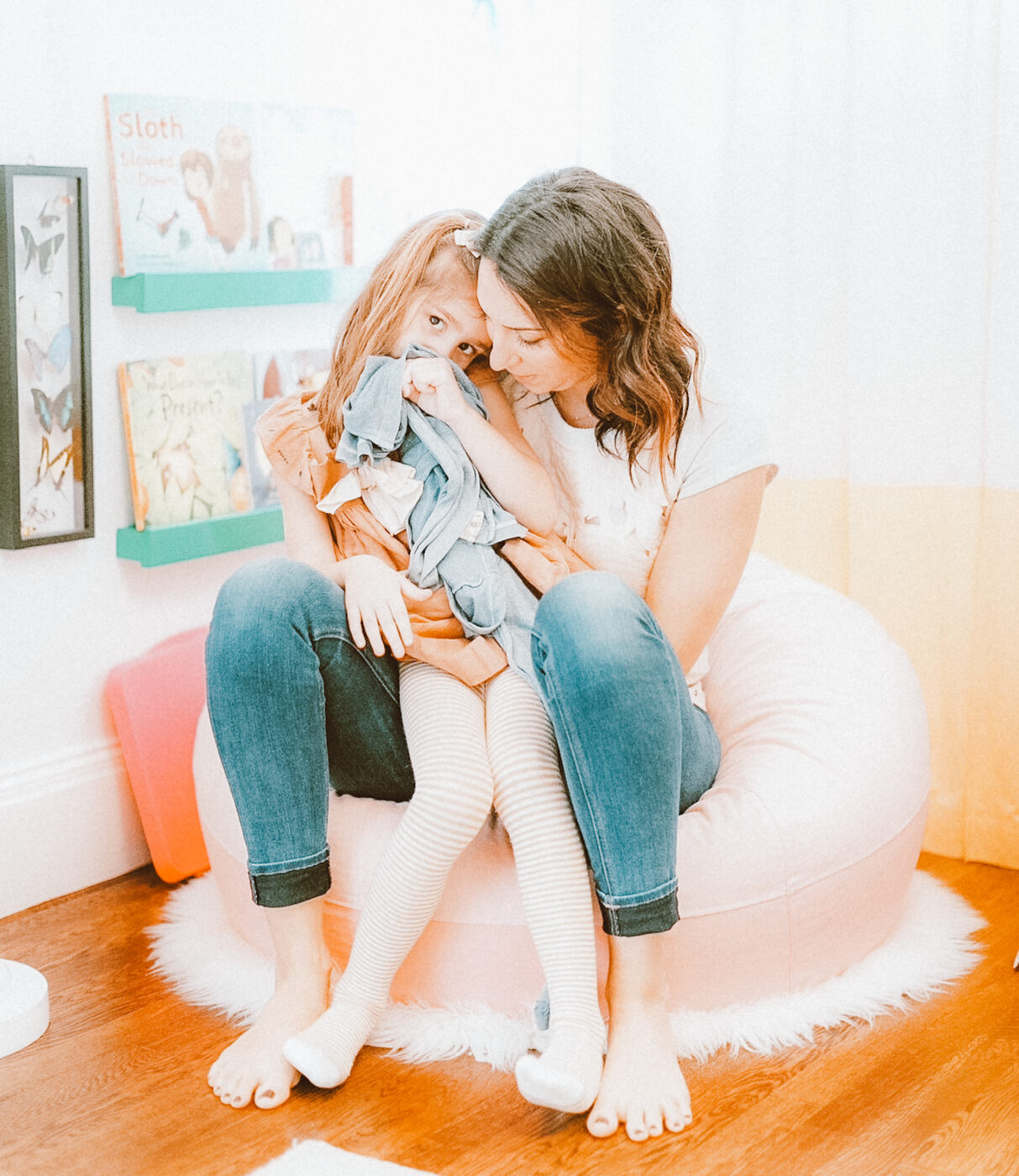What Happens When A Child Is Overtired?
Will a lovey help my child sleep?
Parents of young toddlers often ask: “Should I introduce a lovey to my child?” There are some considerations when deciding if offering a comfort object to your child is a good idea.
What is a lovey?
Let us first define what a “lovey” is. A lovey is a small comfort object, used as a tool to encourage self-soothing during sleep times. Lovey’s come in many forms: a stuffed animal, a favorite blanket, or even a small part of mom’s T-shirt.
When do you recommend introducing a lovey?
Lovey’s are not a safe option for babies under age 1. Sometime after the first birthday, you may want to try introducing a lovey. It can be a useful tool while a child is experiencing separation anxiety or working on self-soothing.
How should we choose a comfort object?
You will want a soft, huggable objective, typically in muted colors. We highly recommend that it be absent of any electronic features to ensure it is not a distraction during sleep.

Toddlers will often adopt one of their playthings as their “favorite”. This is the best way to choose a lovey! You won’t have to worry about introducing the lovey more intentionally if your child chooses it on their own. The first stuffed animal that your little one names or the one they reach for everyday makes the perfect lovey. It is especially sweet if your kiddo asks to take a stuffed friend to bed with them one night. If they show no interest independently, handing a lovey to your child at rest times can help your little one associate it with comfort.
Children will often be most comforted by a piece of clothing belonging to that parent that they have a strong attachment to. Scent is also a strong sense for children to associate with comfort. Sleeping with a stuffed animal for a few nights before offering it to your child can help it smell like you.
Are there any ‘cons’ to consider?
- Stall tactic at bedtime: Sometimes, toddlers will throw their comfort object out of the crib and then cry for a parent to pick it back up for them. This can be especially prevalent during typical toddler sleep setbacks, such as the 18-month sleep regression. If your child starts doing this habitually, return it the first time. If they throw it out again, wait 10 minutes before returning it. A delayed response prevents it from become a repetitive game that is not sustainable. For older toddlers, explain the expectations and enforce them with just one warning.
- Losing the lovey: Losing a beloved comfort object can be hard on a child that is attached. Some parents only allow the lovey in the crib or the child’s bed. Other families allow the lovey to be kept only in a little one’s bedroom. Many do not let the lovey leave the house to avoid any chance of losing it or purchase a duplicate as a backup.
- Keeping it clean: Washing lovey’s needs to be strategically times, if your little one does not want to be without the lovey for nap time or bedtime. If comfort objects are carried outside the house, cleaning will be important as it is near your child’s face while he sleeps.
What are the ‘pro’s to consider?
- Replacement for a pacifier: For older toddlers who can’t seem to part with the pacifier, a security object may be just what you need. Pacifiers can cause drowsiness and therefore lead to additional sleep problems. Night terrors, early morning wakings, and a great likelihood of dental issues become more prevalent if your little one sleeps with one for too long. Hugging a lovey can certainly be a helpful and comforting alternative in place of a pacifier or finger-sucking.
- Certainty in the uncertain: Sometimes a security item helps toddlers adjust more quickly in unfamiliar situations. When tackling a new setting, embarking on a trip, or having to sleep on the go, a lovey can be very comforting. If a lovey will allow your child to adapt more easily in a new place, it can be a very helpful tool. Your goal is to avoid letting the lovey become a crutch — while also leveraging it when it might really help.
- A Sweet Bond: Kids can create a real bond with special comfort items. Don’t be surprised if your toddler knows the difference between the preferred lovey and a back-up. It’s amazing how quickly children can notice even the slightest difference in the amount of wear, etc. Keeping a lovey accessible can help little ones feel most secure at night or during nap time, encouraging them to get back to sleep if something wakes them.
Do we have to introduce a lovey?
Not at all. There is no rule that you must give your child a comfort object. However, a lovey can really help some children feel more secure. If you don’t see a need, you can always choose to forego introducing a lovey. However, if your child adopts one of their stuffies on their own, go with it.


